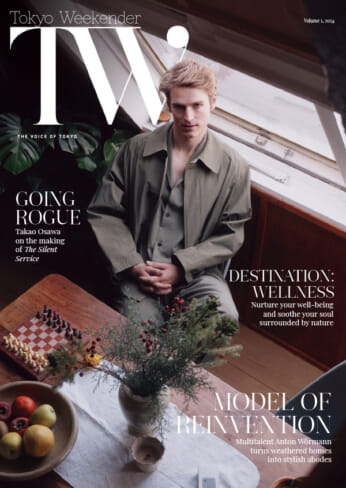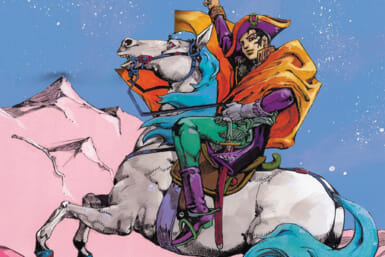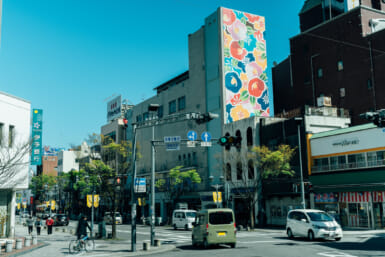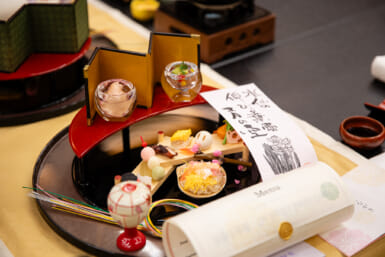by Owen Schaefer
This year, the Mori Art Museum’s triennial exhibition of Japanese art, Roppongi Crossing, is based around five main themes. Want to know what they are? No? Neither do I.
The subtitle of this year’s show, Can there be art?, is a clear indicator that something ambitious and academic was being tackled, involving theory that might have been better approached in an art journal. If you’re keen on such things, the show’s ideas are outlined in painful complexity in the exhibition catalogue. But underlying trends are better seen by simply walking through the museum and allowing the works to speak to one another.
HITOTZUKI (Kami + Sasu), P.I.B., 2007, Latex Paint, Spray Paint on Wall, Yokohama
When plucked out of the rhetoric and looked at as a whole (which, after all, is what most visitors will do), Can there be art? is a show that seeks to alter the all-too-common impression of Japanese art as private, internal and imaginative, and show us a contemporary scene that is more robust, diverse and much, much more socially challenging than you might have thought. These are works—or in many cases, records of works—that have left the gallery space, and confront society head-on to build up, or sometimes tear down, what they find there.
Tearing down is quite literally what Tsubasa Kato’s work does. Kato builds scale models of rooms or buildings, then has members of various communities work together to pull them down with ropes. Like a number of other works in Can there be art?, there is a pure physicality to the performances that culminates in a communal sense of accomplishment as the object crashes to the ground. It’s a feeling quite different from the hush of solitary gallery viewing, and something more akin to a barn-raising—or perhaps a barn demolition.
 UJINO, THE BALLAD OF BACKYARD, 2008, Wood Furniture, Household Electrical
UJINO, THE BALLAD OF BACKYARD, 2008, Wood Furniture, Household Electrical
Appliance and Mixed Media, Dimensions Variable, Photo: Koo
A similarly physical group called ‘Contact Gonzo’ is best known for staging events in public areas, such as parks and train stations, where they look more like a fight club than an art group. Videos of their staged melees show semi-choreographed punches and grapplings, with no shortage of testosterone. But in an increasingly virtual age, Contact Gonzo seems like a physical backlash, and other recent works examine the phenomenon of living in the city, while escaping to the mountains on weekends and the kind of dual existence it implies.
Other artists draw attention to lifestyles and communities that don’t fit the norm: Aki Yahata’s fictional documentary, Michiko Church, follows the life and decisions of a woman living alone, after the death of her husband, in a ramshackle church they’ve built in the mountains. And Takamine Tadasu’s Baby Insa-dong takes a somewhat didactic but frank look at first- and second-generation Korean residents in Japan, by creating a highly personal installation incorporating his own experience of getting married to his second-generation Korean partner.
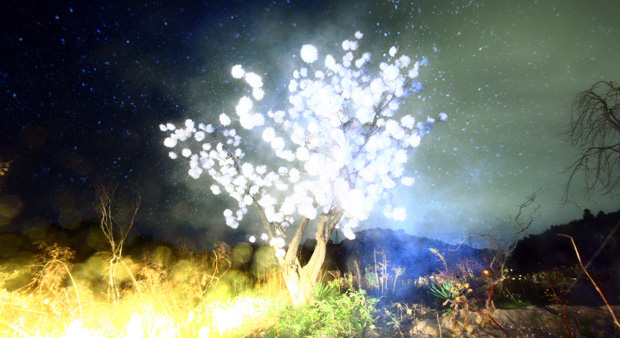 Shiga Lieko, Wedding Veil, 2007, C-Print
Shiga Lieko, Wedding Veil, 2007, C-Print
But closest to my heart is Yosuke Amemiya’s Whiplash Neuron. While it is most definitely a gallery-based performance work, it is brilliant in its inward-spiraling feedback between performer and audience, viewer and viewed. And there are few works in which an audience so literally enters the world of the performance, perhaps becoming as aware of one another as the artist. The performance space is easy to miss, but a delight to find, so keep a lookout for… unusual entrances.
There are 20 Japanese artists represented at this year’s Roppongi Crossing, ranging from the established works of Yasumasa Morimura and Tomoko Yoneda to an unpronounceable graffiti artist whose name is a candle-like symbol. And unburdened by theory and classification, the breadth of works shown here make the question ‘Can there be art?’ seem downright rhetorical.
Show: Roppongi Crossing 2010: Can there be art? (to July 4)
Gallery: Mori Art Museum (Roppongi station)
Hours: 10am–10pm (Tue to 5pm)
Admission: ¥1,500
Tel: 03-5777-8600
www.mori.art.museum
